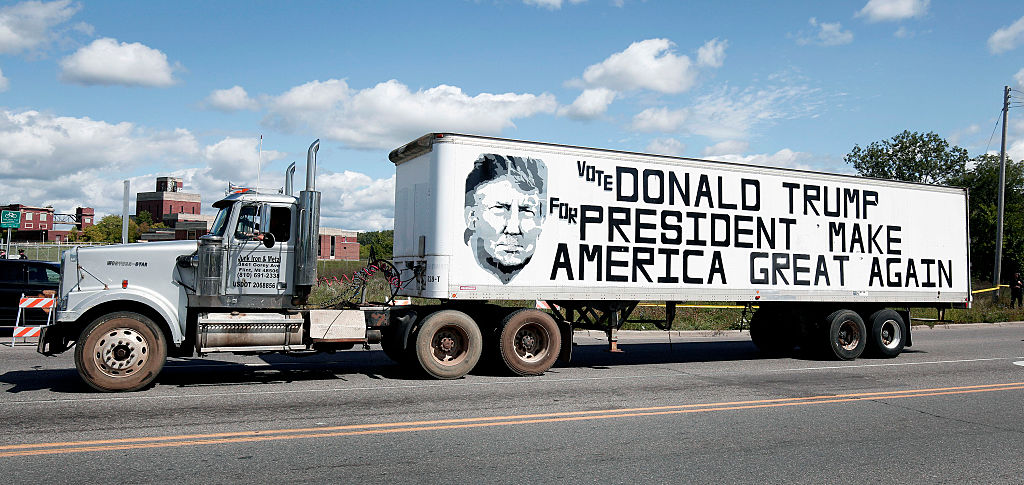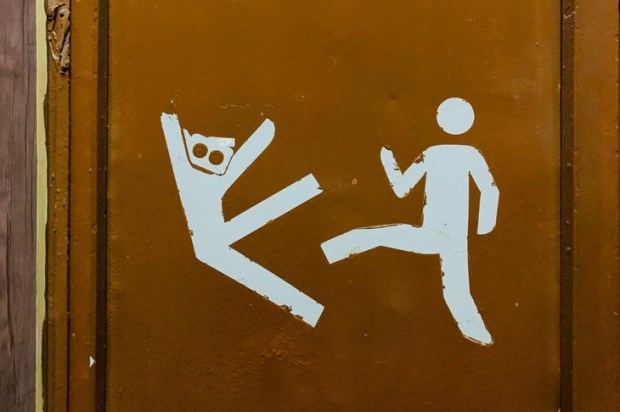 For the first time in more than 25 years the Republican Party has a legitimate heir to the blue collar conservative electoral appeal of Ronald Reagan and Richard Nixon in Donald Trump.
For the first time in more than 25 years the Republican Party has a legitimate heir to the blue collar conservative electoral appeal of Ronald Reagan and Richard Nixon in Donald Trump.
Trump, as Reagan and Nixon did during their time as President, has made it clear that he is not averse to intervening in order to even up the so called free trade playing field and where necessary support manufacturing industries to protect well paid, skilled blue collar jobs. In addition Trump, like Reagan and Nixon before him, is no enemy of organised labour, as it is clear from his business record that he respects unions and has been able to work with them in building a successful business empire.
Trump has significant appeal with blue collar Americans just as Nixon did with his ‘silent majority’ and Reagan with the so called ‘Reagan Democrats’, whose support was pivotal to his crushing election victories in 1980 and 1984. Just as the silent majority were with Nixon in his response to Vietnam and the counter culture, and the Reagan Democrats supported Reagan’s remedies to cure stagflation, they also identify with Trump’s simple but effective campaign slogan – ‘Make America Great Again’.
In the words of the nineteenth century American political philosopher William Sumner, these people are the quintessential ‘forgotten man’. They have watched their well-paid, high skilled jobs disappear over the last 20 years, sacrificed at the altar of free trade, and the withering away of American manufacturing. Their health has also been affected to the point where a recent study by academics from Princeton University found that from the beginning of the twenty-first century there has been rising morbidity in midlife among white non-Hispanic American men and women while the morbidity rate has declined for African Americans and Hispanics.
Back in the 1980s when the Japanese auto makers were smashing US car and motor bike manufacturers, what did Ronald Reagan do? He did what any sane conservative would do and moved to increase tariffs to protect industry, jobs and communities. In what the New York Times described at the time as an ‘unusually strong protectionist action’, Reagan ordered a tenfold increase in tariffs for imported heavyweight motorcycles in order to protect Harley Davidson. Reagan was also not averse to supporting government bail outs of manufacturers, indeed on becoming President he did not seek to undo government assistance for Chrysler, which had initially been approved by Jimmy Carter in 1980.
In order to have been so successful in the union dominated New York construction industry, it is obvious that Trump has been able to work productively with the local building unions. Trump not only uses union labour, but also agrees to collective bargaining on his development projects.
In May 1970, construction workers famously took to the streets of downtown New York and chased anti-war protesters whacking them with their hard hats as the police looked on with a grudging admiration. They became known as the ‘hard hats for Nixon’ and they were showing their support for Nixon’s actions in Vietnam and their patriotism for an America that they perceived correctly was under threat from within.
It is true that Nixon was not popular with unions for freezing wages, but in the 1972 presidential election, the AFL-CIO refused to endorse the Democratic candidate George McGovern for President. This was a stunning rebuke for McGovern and a major win for Nixon. The importance of organised labour’s support was not lost on Nixon and his political fixer Chuck Colson set to work on building support from the unions which contributed to Nixon’s thumping 49 state win over McGovern. Upon his re-election Nixon appointed Peter Brennan as his Secretary of Labour who was a career unionist and had previously been the president of both the Building and Construction Trades Council of Greater New York and the Building and Construction Trades Council of New York.
Although the AFL-CIO has sought to attack Trump, it is surely as much an indication of their concern that their members are predisposed to voting for Trump as it is any ideological position they may be taking. As for Trump supposedly getting migrants off side by saying he will build a wall on the Mexican border, those migrants who are legal, work, union members, pay taxes and are raising a family are just as likely to be on Trump’s wavelength when it comes to his position on illegal immigrants as any white American.
Reagan’s history in the union movement is of course well known, having served as President of the Screen Actors Guild. Importantly he did not shy away from his support for labour once he became President in 1980. Despite his mass sacking of air traffic controllers in 1981 that were in fact breaking federal law by striking, Reagan made his support for labour clear later that year when he stated that ‘Collective bargaining…has played a major role in America’s economic miracle. Unions represent some of the freest institutions in this land. There are few finer examples of participatory democracy to be found anywhere. Too often, discussion about the labor movement concentrates on disputes, corruption, and strikes. But while these things are headlines, there are thousands of good agreements reached and put into practice every year without a hitch.’
Reagan and Nixon are arguably the two most electorally popular Republican politicians of the last 100 years. This is in no small part because of their ability to build coalitions by understanding the innate conservatism of working class Americans. If the primaries are any indication, then William Sumner’s forgotten man will vote for Trump and in large numbers, just as they did for Nixon and Reagan. As the polls become tighter, Hilary Clinton and the Democrats should be worried.
Got something to add? Join the discussion and comment below.
Get 10 issues for just $10
Subscribe to The Spectator Australia today for the next 10 magazine issues, plus full online access, for just $10.

























Comments
Don't miss out
Join the conversation with other Spectator Australia readers. Subscribe to leave a comment.
SUBSCRIBEAlready a subscriber? Log in